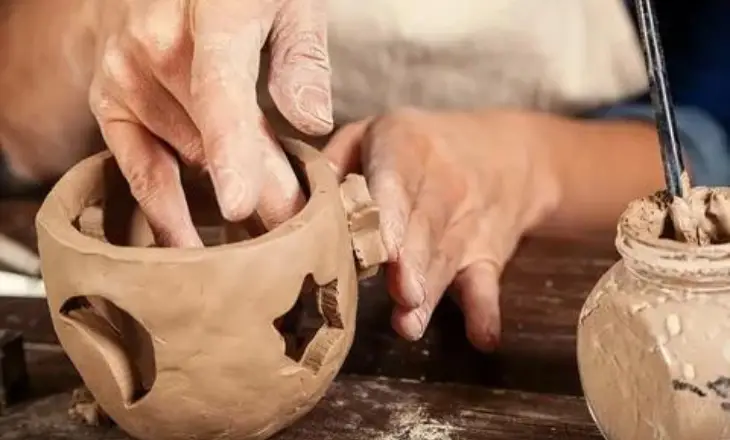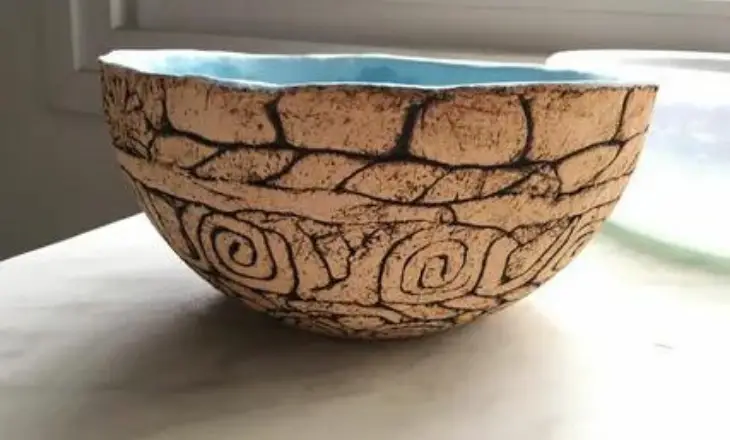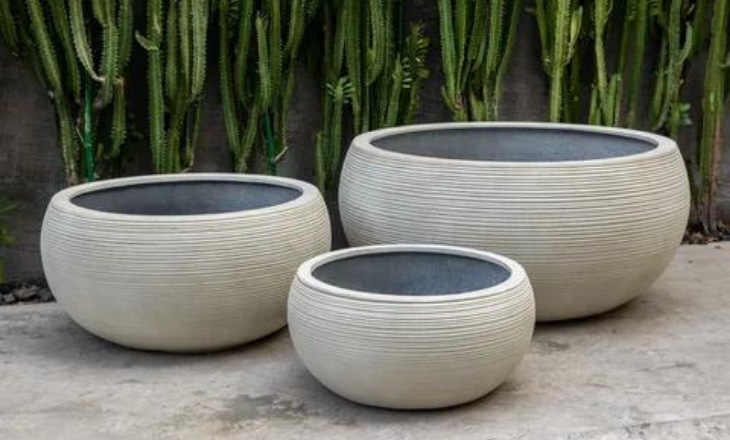Handbuilding pottery offers a deeply satisfying and beautiful experience, connecting you with the earthy material and your natural creativity. In this thorough guide to hand-building pottery, we will take a look into the age-old skill that has stood out over the years and explore techniques, concepts, and approaches for creating unique ceramic artwork.
What Is Hand-Building Pottery?
An ancient technique, hand-building pottery involves using the hands, basic tools, and a variety of methods, including coiling, pinching, and slab building, to create ceramic items. pottery is thrown on a wheel, and hand-building enables greater creativity and unique expression. Through hand modeling the clay, artists can produce a variety of shapes, textures, and designs that give each item a unique look.

From mugs and bowls to sculptures and vases, handbuilt pottery offers endless possibilities for artistic expression. It is a lively art form that is appreciated all over the world.
A Brief History Of Hand-Built Pottery
Hand-built pottery has been an integral part of human history for thousands of years, dating back to ancient civilizations such as the Egyptians, Greeks, and Chinese. These early potters used simple tools and their hands to shape clay into vessels for cooking, storage, and religious customs.
Venus of Dolní Věstonice is a figure that is the oldest known ceramic artifact. The roughly 30,000-year-old ancient earthenware statue was discovered in the Czech Republic today.
Through its complicated designs and symbolic meanings, each item conveyed a message that reflected the community’s ideals and beliefs. In the 20th century, it saw an increase in popularity as artists accepted conventional techniques and searched for fresh ways to bring this ancient craft back to life.
The Best Clay For Hand-Building Pottery
Selecting the right type of clay for hand-building pottery can be a difficult task for those who want flexibility and ease of use, white earthenware clay is a top challenge. Its fine texture allows for difficult details and smooth surfaces, making it perfect for designs. Many potters find stoneware clay to be attractive due to its natural earthy look and strength. Its broad burning range allows a choice of finishing methods, including high-fire reduction and open glazing.
Below are some of the top-rated and suggested varieties of clay.
Porcelain
Handbuilding pottery with porcelain is a delicate and rewarding artistic practice that allows for the creation of unique, stunning pieces. The smooth, creamy texture of porcelain is ideal for hand-building methods, allowing artists to stretch, bend, and shape the clay in ways that go against convention.
Since porcelain is known for its ability to bend or crack throughout the drying and firing processes, working with it by hand requires accuracy and patience. Porcelain is created by carefully shaping clay and firing it at a high temperature, producing a material that is both incredibly light and strong.
Stoneware
Stoneware is becoming more and more well-liked in the ceramics industry because of its classic beauty and reliability. This flexible material is ideal for both cooking and serving food because it is able to handle high temperatures and maintain heat effectively. Stoneware differs from other forms of pottery in that it can carry complex patterns and bright colors.
It is the perfect material for cookware since its non-porous surface keeps smells and flavors from getting through. Whether baking or roasting food, the solid texture of stoneware promotes equal heat dispersion, guaranteeing consistently successfully prepared meals.
Earthenware
The porous nature of earthenware enhances ventilation, making it ideal for storing food and drinks while adding a delicate taste that enhances the dining experience. Its capacity for change also extends to decorative items, where complex designs and elements can be created according to the material’s related colors and elasticity.
How Do You Prepare Clay For Hand-Building?
Preparing clay for hand-building is an essential step in the pottery process and requires careful attention to detail. You’ll need to wedge or knead the clay thoroughly to remove air bubbles and ensure a consistent texture. This helps prevent cracking during the drying and firing stages. One technique is to mist the clay with water while storing it in an airtight container to maintain optimal moisture levels. These considerations are vital for both beginners and experienced potters alike when engaging in hand-building techniques using clay.
Handbuilding Techniques
There are three basic techniques of hand-building in ceramics:
- Pinching pots
- Coiled pots
- Slab pots
Pinching Pots
By using just their hands and simple tools, potters can mold and shape clay into beautiful vessels, each with its individuality. Each pinch and fold in the clay becomes an expressive gesture, capturing the energy and creativity of the artist in every piece they create. The process itself requires patience and skill, as well as an understanding of how to work with the natural properties of clay.
Coiled Pots
To construct a vessel’s walls, the coiling pottery process involves rolling out long clay sections and layering them on top of one another.

In contrast to wheel throwing, coiling calls for an in-depth understanding of the action of the clay, creating a closer bond with the material. Rich textures and complex surface designs showcasing the slow construction process are common features of coiled pots, drawing the eye in for a closer look.
Slab Pots
Slab pots have been gaining popularity in pottery for their unique and distinctive look. Slab pots are built by joining flat pieces of clay together, allowing for endless possibilities in shape and design. This method offers artists the chance to create intricate patterns and textures that would be difficult to achieve with other techniques.
How to learn Hand-Building
The practice of hand-building allows creative expression using clay and one’s own hands. Compared to using a pottery wheel, this method offers a more natural and organic approach to manufacturing pottery. One key aspect of learning hand-building is understanding the properties of different types of clay, such as earthenware or stoneware, and how they behave during the forming and firing processes.
Handbuilding Pottery Ideas
One fun idea is to create a set of hand-built mugs, each with its unique design or shape. These personalized mugs can make for a memorable gift or can simply add a touch of individuality to your kitchen.
Another exciting project could be building a series of geometric planters, using simple techniques like slab construction or coiling.
Kristen’s Favorite Hand-Building Project: The Colosseum

Coffee Mug
As I hold Kristen’s favorite handbuilt coffee mug in my hands, I can’t help but marvel at the unique texture and organic shape. This one feels handmade, with each mark displaying the maker’s handprint. The smooth, earthy glaze adds a sense of warmth and comfort as I wrap my fingers around it.
Kristen’s favorite handbuilt project offers a reminder to slow down, appreciate the tactile beauty around us, and find joy in the artful imperfections of handmade items.
Slab Built Planters

Kristen’s favorite hand-building project is creating unique and functional slab-built planters. The process of constructing these planters involves rolling out slabs of clay and shaping them into a variety of forms, allowing for endless creativity and possibilities. From geometric designs to whimsical shapes, Because slab building is so adaptable, Kristen is able to create functional objects for plant care and convey her creative viewpoint.
Through her dedication to this craft, Kristen continues to inspire others by demonstrating how handmade planters can elevate everyday experiences while celebrating the beauty found in simplicity.
A Spoon Rest
This simple piece displays the class of handcrafted ceramics while also playing a vital role in maintaining kitchen grooming. She turns a common item into an eye-catching feature in any kitchen by bringing distinctive patterns and colors into each piece.
Conclusion
Hand-building pottery offers a unique and fulfilling way to express creativity and artistry. Starting up hand-building pottery offers a strong sense of connection to both skilled work and history, as well as a universe of creative possibilities.
FAQ’s
What Is The Definition Of Hand-Building Ceramics?
Hand-building ceramics is the oldest method of making pots, plates, and other items out of clay. It involved creating the shapes without the help of a potter’s wheel, instead of just using your hands and simple tools. Pinch pottery, coil building, and slab building are all forms of hand-building ceramics.
What Are The 4 Hand-Building Techniques?
Four basic hand-building techniques will be introduced: Pinching, coiling, slab, and sculpture. Students will learn about the properties of clay and the stages that will be followed to create 2D and 3D objects.
